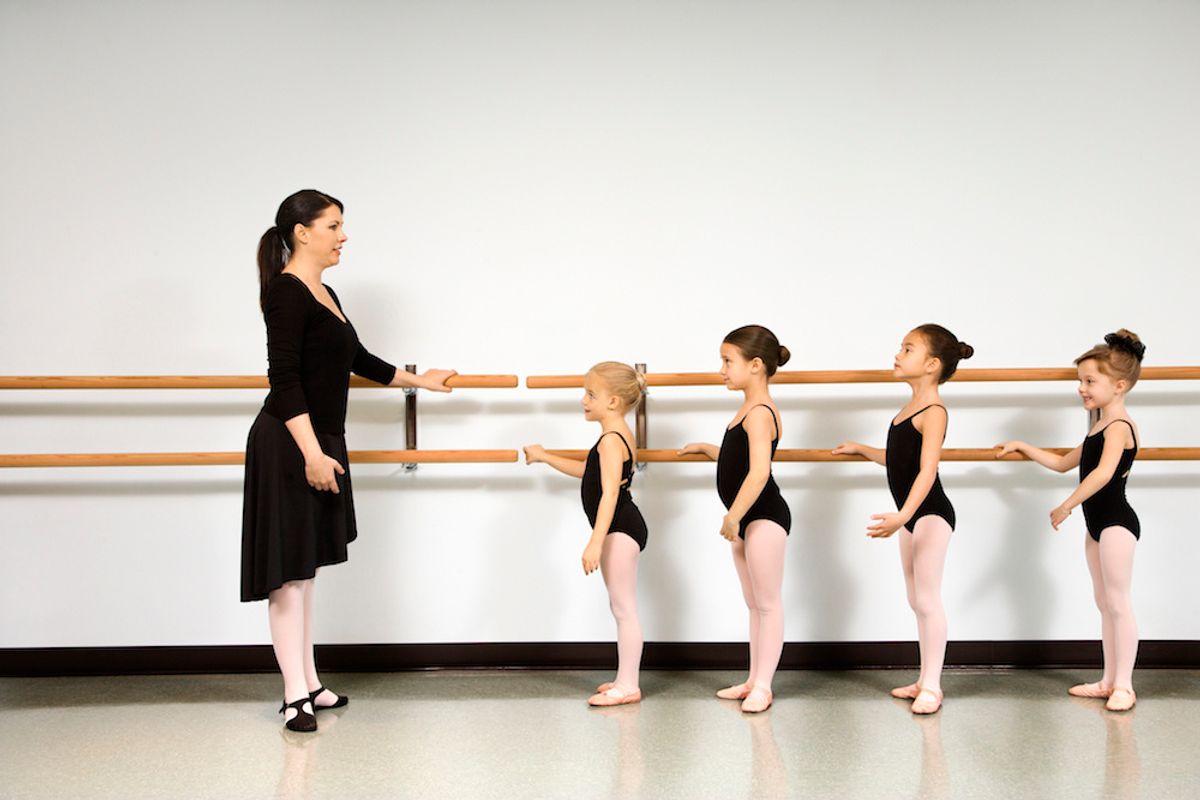
Do you have new preschool students enrolling in your upcoming dance year? These tiny dancers just beginning their movement journey are poised to become part of your studio community for the next decade or more.
Keep in mind that dance class may be one of the first times a child under age 5 has been separated from their parents. Dance class can be exciting and full of anxiety for both the parent and the child. As their first teacher, you need to set the stage for an easy, happy and memorable first experience. Here’s how—with four studio rules for parents—to create an environment where preschoolers can thrive.
1. Do not allow parents in your room—at first.
My intent with my youngest dance classes is to give them the best chance to succeed. If you create an environment for children to feel comfortable, that will turn into trust. Trust will turn into love, and the rest is history. In order to make this happen, I have to have control of my room. I don’t allow parents to cross the threshold of my class for at least two months. If they do, they immediately change the dynamic of my class—they break my “mojo,” as I like to say. At the end of class I quickly transition to the next class without giving parents a chance to enter. If they have a question, I tell them to e-mail me. A child for whom I have worked so hard to gain their trust and who is finally releasing their fears will fall apart once a parent (even if it is not their parent) steps into the room.
At a recent conference I had numerous teachers ask me to give them dialogue to convince the owners of their studio to implement this policy. I responded with a question: Is the studio’s intention to make the parents happy, or the child happy? When you make a child happy, you will in turn make the parents happy. But catering to the parents in the beginning will only set the child up for failure and put added pressure on the teacher.
2. Tell parents what to expect before classes begin.
I communicate via e-mail the week before (and then again the day before class) simple instructions of what I want them to do: Walk your child in, do not hold them. Sit in the lobby with them sitting beside you. I will walk into the lobby (this only happens the first three weeks of class) and “gather dance friends.” This does several things. It allows the dancer to see Mom sitting, relaxed, like all the other moms, which creates easy separation. It offers support seeing little dance friends holding hands. It also gives parents a great photo opportunity of all the little ballerinas holding hands walking into dance class together. Parents also understand they are to have their child “potty” before class and not to open the door during class, since this breaks the flow of class.
3. Ask parents to watch their language. (This is not what you think!)
I communicate with the parents to not say anything like “Miss Kim, she is going to have a hard time leaving me.” I explain that by saying that phrase (or anything similar), they are setting their expectations for their child—and their child will most often do exactly what a parent expects of them. As parents we all have fears of our child not performing like the others. We want our child to have fun and be involved. But our children can surprise us if we will allow it. As hard as it is to hear their child cry when I peel them away from their arms, seeing them stand in line at the end of class with a smile on their face as they curtsy for the first time is much stronger.
4. Timing is everything for the first class observation.
The week before Halloween, I allow a parent observation. Parents are allowed to watch the entire class. I e-mail parents explaining my expectations of them, such as turn the cell phones off. I explain that this is a high-pressure situation for their dancer, and if their child runs to them it is OK. I suggest they give the child a hug and encourage them to join back in class. If they refuse, it is OK—it is not a normal class, so they should not expect them to perform like a pro.
The next week is Halloween, and we all come to class in costume. It is hard to separate again after observation week—costumes help! The students are anxious to show me who they are and to see who I am. I have another observation in April before our spring break. By this time I have opened the door at the end of class several times and allowed parents to give me a “ticket” to see a sneak peek of their dancer’s spring concert dance. Hearing a 3-year-old giggle and seeing them stand so proud while their parent enters is just awesome.



